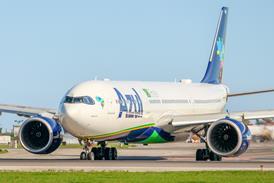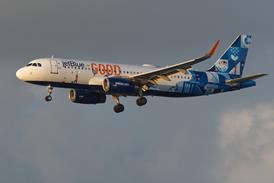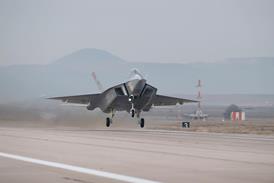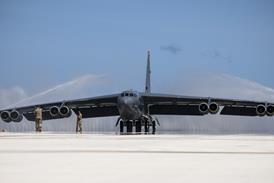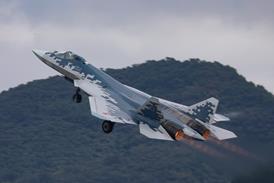It has been hard keeping up with Gama Aviation in the five years since the pandemic. The multi-faceted aviation services company, founded by Marwan Khalek and his business partner Stephen Wright in 1983, last year exited the stock market after a decade-long stint as a publicly traded company. It also sold its large US maintenance, repair and overhaul (MRO) business in 2023, two years after acquiring it – and three years after divesting its other stateside interests.
However, the Farnborough-based outfit – never to be confused with GAMA, the US-based General Aviation Manufacturers Association – has also been growing in other directions as Khalek and his colleagues look to invest the proceeds of the sale of its US operations into expanding the mostly UK-oriented businesses that remain.
It has launched a North Sea offshore helicopter joint venture with sector veteran Peter Bond, begun work on a flagship fixed-base operation (FBO) in Sharjah in the United Arab Emirates which is due to open later this year, and acquired the assets of two entities: Austrian charter operator Tyrolean Jet and cash-strapped Specialist Aviation Services, a UK-based air ambulance operator and MRO provider.
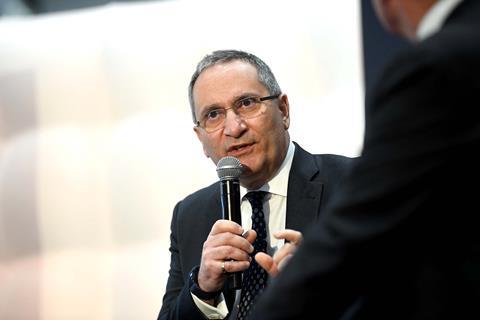
Although it has always been a profitable and well-run business, the complexity of Gama Aviation’s portfolio – which includes everything from government security contracts to air ambulance operations, and software services to FBOs and MRO – was one reason Khalek and his board decided to delist from London’s Alternative Investment Market (AIM) in April 2024, returning £32.6 million ($43 million at current exchange rates) to shareholders.
Khalek – who took Gama Aviation public 10 years earlier via a reverse takeover of the smaller but publicly traded, Oxford-based aviation company Hangar8 – says the regulatory burden of trading on AIM was disproportionate to the benefits. Those included widening the shareholder base and raising capital without having to go to the private equity market.
However, there was a belief that the market could not fully comprehend, and consequently undervalued, Gama Aviation’s stock. An illustration of this was that the price the company sold its US subsidiary Jet East for in late 2023 – $131 million – was more than Gama Aviation’s entire market capitalization at the time. Raising capital is not a problem, says Khalek, because financiers are happy to lend to a company supporting long-term government contracts.
Gama Aviation is now organised across five divisions: aircraft management and charter; maintenance, repair and overhaul; fixed-base operations with sites in Glasgow, Jersey, and Sharjah; a software and consultancy business; and the fastest growing: special mission, largely focused on providing offshore helicopter transport, defence, and essential medical services.
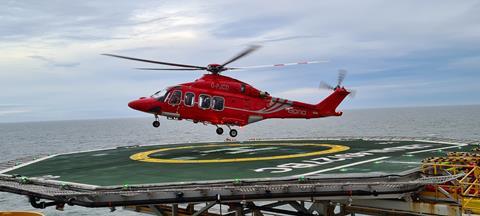
The divisions – each of which is run by a managing director – operate as profit-and-loss centres. However, they are interlinked with, for instance, the MRO operation backing up the special mission fleet and aircraft management and FBO clients, and the businesses trialing software developed in-house before it is marketed to third-party customers.
The 2023 sale to West Star Aviation of Jet East – which Gama Aviation had bought less than three years earlier – saw Gama Aviation fully exit the US market. It followed its March 2020 divestment of US joint venture Gama Aviation Signature to Wheels Up. However, it has provided funds to “supercharge” the rest of the UK-based businesses, according to Khalek, who says the company has made £200 million in capital commitments in the past two years.
Gama Aviation has enlisted industry veteran Graham Williamson to run its aircraft and charter arm. Williamson, who admits Gama Aviation is “not really known as a management company”, has ambitions to grow the fleet from 23 aircraft today to more than 30 by the end of the year. He says that a fleet of 50 would be the “sweet spot”, positioning the company between industry giants such as Luxaviation and the “mom and pop” outfits with single-figure portfolios.
While only around seven of the current fleet are available for charter, Williamson says Gama Aviation has established a niche as a “boutique, quality provider” with a focus on “high-end” contracts such as rock band and sporting tours. “There is still a place in the market for customers who want a personal service and are prepared to pay a little bit more for it,” he says.
Earlier this year, Gama expanded the appeal of its management offer by securing air operator certificates (AOCs) in Austria and Malta via its acquisition of the assets of Tyrolean Jet & Service, which included an in-house fleet of four small Cessna Citation jets. Gama already had a Maltese AOC, alongside certificates from the UK, Cayman Islands and the UAE, and has recently added San Marino.
MRO business
Its MRO business has also been growing. Gama, which has existing maintenance hangars at Bournemouth and Farnborough airports, covering 21 types, last year added a facility at Gloucester, along with helicopter maintenance contracts, following the acquisition from administration of Specialist Aviation Services. The company has also set up a mobile service team and line maintenance stations at Sharjah and Al Maktoum airports in the UAE.
Special mission is perhaps the area that Gama is most recognized for. A long-term provider of fixed-wing air ambulance and rather hush-hush government national security services, it made a significant breakthrough five years ago when it won the contract to provide rotorcraft-based essential medical services in Scotland. It has since added medevac deals in Wales and the Channel Islands and set up its Bond-branded offshore joint venture in Norwich.
The contract with the Scottish Ambulance Service, which is funded directly by the National Health Service, will renew in mid-2026 for another seven years. Under the arrangement, Gama operates three Beechcraft King Air 200s based in Aberdeen and Glasgow, which are due to be replaced by new King Air 360s next year, as well as three Airbus Helicopters
H145s in Inverness and Glasgow that it is updating to the latest five-bladed configuration by next year. Additionally, it operates three King Air 200s in the Channel Islands. It has a Leonardo Helicopters AW169, servicing a medevac contract in Dorset, and is adding a second in December. There are three AW169s at Redhill, near London, providing cover for Kent, Surrey, and Sussex, and two of the same model at North Weald airfield for Essex and Hertfordshire. Under a contract with Wales Air Ambulance, Gama has four H145s at different locations in the principality.
The offshore market is a recent venture. Gama has four AW139s at Norwich and a further three on order, servicing oil rig contracts in the southern North Sea, although the company views opportunities in the windfarm and lighthouse segments, possibly beyond the UK.
Although the name of its 50/50 joint-venture partner, Bond, adorns the operation, Gama holds the AOC.
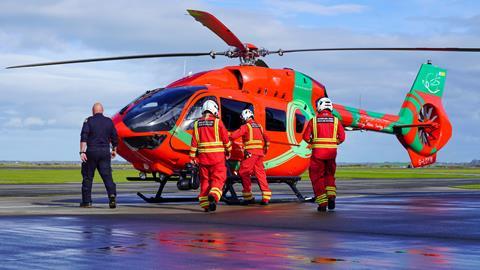
Gama’s consultancy business is perhaps the least known aspect of its operation, but it is one of the fastest growing, particularly in the USA, where the company today has no other presence. The portfolio includes proprietary maintenance tracking, scheduling, and FBO operational software. Business aviation flight departments, FBOs and even small airlines are among the customers. “The US is our biggest market,” says Andrew McConachie, the division’s director.
While Gama’s FBO business runs small operations in Glasgow and Jersey, where it plans to build a new hangar, the marquee site is Sharjah where later this year it will replace its existing facility with an 80,000sq m (861,000sq ft) “Business Aviation Centre” with a lounge and leasable offices. Gama’s decision to establish a presence in the neighbouring emirate to Dubai over a decade ago was controversial, although the company believes it is paying off.
Sharjah airport is tiny compared with the giant Dubai International (DXB), just 30min drive away, which for years had been the base for the UAE’s business aviation players, including Jet Aviation and ExecuJet. However, in the 2010s the authorities in Dubai began persuading business aviation firms to move to the new Al Maktoum airport (DWC) south of the city, as DXB reached capacity largely because of the growth of Emirates Airline and Dubai’s tourism market.
That saw a tide of operators move to or establish facilities at DWC, including Falcon Aviation, Jetex, DC Aviation-Al Futtaim, ExecuJet and others. “We asked ourselves do we want to build the sixth FBO at DWC, or break ranks and go to Sharjah?” says Khalek. Gama now positions its FBO as a quieter alternative to DWC and DXB, but convenient for the northern districts of Dubai, where many of the emirate’s elite live or have businesses.

